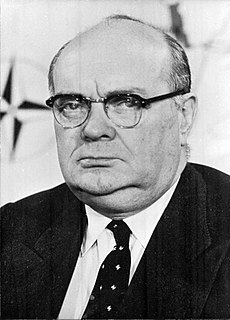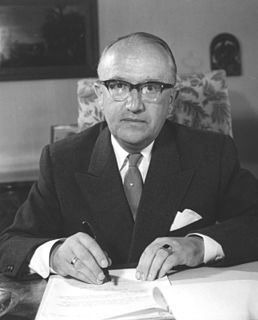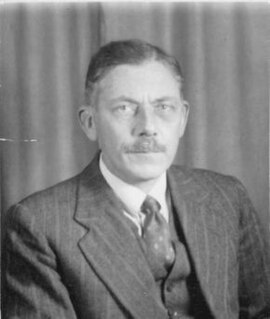
The European Coal and Steel Community (ECSC) was an organisation of six European countries created after World War II to regulate their industrial production under a centralised authority. It was formally established in 1951 by the Treaty of Paris, signed by Belgium, France, Italy, Luxembourg, the Netherlands, and West Germany. The ECSC was the first international organisation to be based on the principles of supranationalism, and started the process of formal integration which ultimately led to the European Union.

The European Economic Community (EEC) was a regional organisation that aimed to bring about economic integration among its member states. It was created by the Treaty of Rome of 1957. Upon the formation of the European Union (EU) in 1993, the EEC was incorporated and renamed the European Community (EC). In 2009, the EC's institutions were absorbed into the EU's wider framework and the community ceased to exist.

The European Union is a geo-political entity covering a large portion of the European continent. It is founded upon numerous treaties and has undergone expansions and secessions that have taken it from 6 member states to 27, a majority of the states in Europe.

The Treaty of Rome, officially the Treaty establishing the European Economic Community brought about the creation of the European Economic Community (EEC), the best-known of the European Communities (EC). It was signed on 25 March 1957 by Belgium, France, Italy, Luxembourg, the Netherlands and West Germany and came into force on 1 January 1958. Under the name Treaty on the Functioning of the European Union, it remains one of the two most important treaties in the modern-day European Union (EU).

Paul-Henri Charles Spaak was an influential Belgian Socialist politician, diplomat and statesman. Along with Robert Schuman, Alcide Degasperi and Konrad Adenauer he was a leader in the formation of the institutions that evolved into the European Union.

The European Atomic Energy Community is an international organisation established by the Euratom Treaty on 25 March 1957 with the original purpose of creating a specialist market for nuclear power in Europe, by developing nuclear energy and distributing it to its member states while selling the surplus to non-member states. However, over the years its scope has been considerably increased to cover a large variety of areas associated with nuclear power and ionising radiation as diverse as safeguarding of nuclear materials, radiation protection and construction of the International Fusion Reactor ITER.

Walter Hallstein was a German academic, diplomat, and statesman. He was the first president of the Commission of the European Economic Community and one of the founding fathers of the European Union.

The European Communities (EC), sometimes referred to as the European Community, were three international organizations that were governed by the same set of institutions. These were the European Coal and Steel Community (ECSC), the European Atomic Energy Community, and the European Economic Community (EEC); the last of which was renamed the European Community (EC) in 1993 by the Maastricht Treaty, which formed the European Union.

Between 1993 and 2009, the European Union (EU) legally comprised three pillars. This structure was introduced with the Treaty of Maastricht on 1 November 1993, and was eventually abandoned on 1 December 2009 upon the entry into force of the Treaty of Lisbon, when the EU obtained a consolidated legal personality.
- The European Communities pillar handled economic, social and environmental policies. It comprised the European Community (EC), the European Coal and Steel Community, and the European Atomic Energy Community (EURATOM).
- The Common Foreign and Security Policy (CFSP) pillar took care of foreign policy and military matters.
- Police and Judicial Co-operation in Criminal Matters (PJCCM) brought together co-operation in the fight against crime. This pillar was originally named Justice and Home Affairs (JHA)

The Monnet Authority was the first High Authority of the European Coal and Steel Community (ECSC), between 1952 and 1955. Its president was Jean Monnet of France.

The period saw the first moves towards European unity as the first bodies began to be established in the aftermath of the Second World War. In 1951 the first community, the European Coal and Steel Community was established and moves on new communities quickly began. Early attempts at military and political unity failed, eventually leading to the Treaties of Rome in 1957.

The Messina Conference of 1955 was a meeting of the six member states of the European Coal and Steel Community (ECSC). The conference assessed the progress of the ECSC and, deciding that it was working well, proposed further European integration. This initiative led to the creation in 1957 of the European Economic Community and Euratom.

The Intergovernmental Conference on the Common Market and Euratom was held in Brussels and started on 26 June 1956 with a session in the Grand Salon of the Belgian Foreign Ministry. The negotiations went on at the Château of Val-Duchesse in Auderghem (Brussels) and would continue until March 1957. The conference was held to draft the Treaties establishing the European Economic Community (EEC) and the European Atomic Energy Community. The conference built on the results of the Spaak Report of the Spaak Committee and the decision taken at the Venice Conference to prepare the plan for the establishment of a common market and the establishment of a European Community for the peaceful use of atomic energy.

The Venice Conference was held in Venice on 29 and 30 May 1956. The Foreign Ministers of the six Member States of the European Coal and Steel Community met at the Cini Foundation on the Venetian island of San Giorgio Maggiore to discuss the Spaak Report of the Spaak Committee. At the conference the Foreign Ministers explained the views of the ECSC governments on the proposals in the Spaak Report. As a result of the conference they decided to organize the Intergovernmental Conference on the Common Market and Euratom in order to prepare for establishment of a common market and a European Community for the peaceful use of nuclear power.

The Spaak Report or Brussels Report on the General Common Market is the report drafted by the Spaak Committee in 1956. The Intergovernmental Committee, headed by Paul-Henri Spaak, presented its definitive report on 21 April 1956 to the six governments of the member states of the European Coal and Steel Community.

The Benelux memorandum of 1955 was a document drafted by the three Benelux countries on 18 May 1955 as a means to reviving European integration on the basis of a general common market.

Johan Willem "Wim" Beyen was a Dutch politician and diplomat of Liberal signature and businessman. Beyen played an important role in the creation of the European Economic Community and is regarded as one of the Founding fathers of the European Union.

The High Authority was the executive branch of the former European Coal and Steel Community (ECSC). It was created in 1951 and disbanded in 1967 when it was merged into the European Commission.

Russell Frederick Bretherton,, was a British economist, civil servant and amateur entomologist, particularly noted for his membership of the Spaak Committee in 1955.

The European Schools is an intergovernmental organisation, which has established, finances, and administers a small group of multilingual international schools, bearing the title "European School", which exist primarily to offer an education to the children of European Union (EU) staff; offers accreditation to other schools, bearing the title "Accredited European School", under national jurisdiction within EU member states to provide its curriculum; and oversees the provision of the secondary school leaving diploma, the European Baccalaureate.










